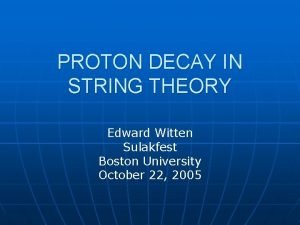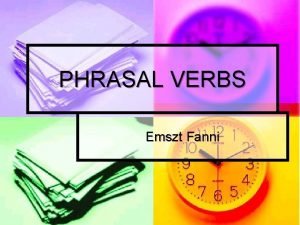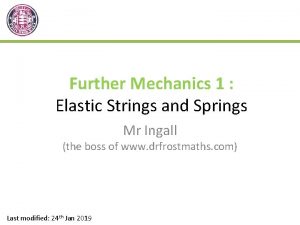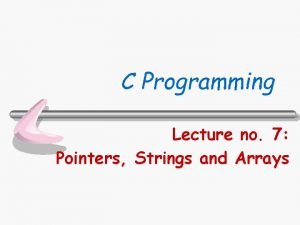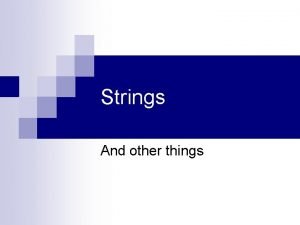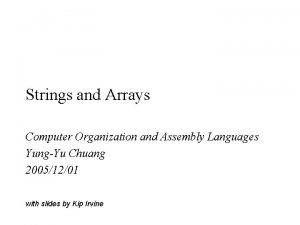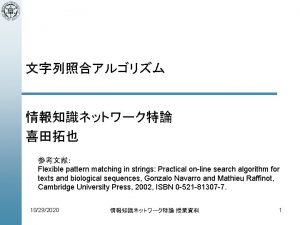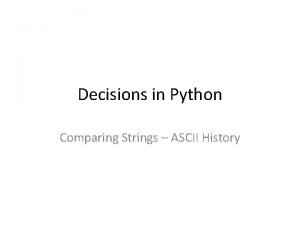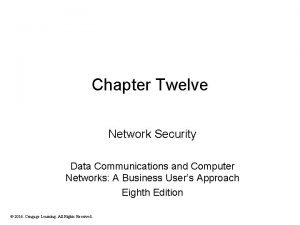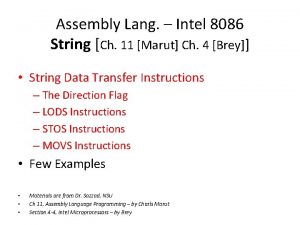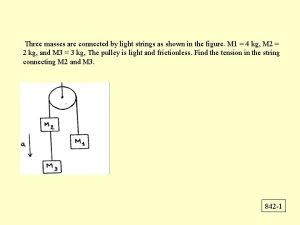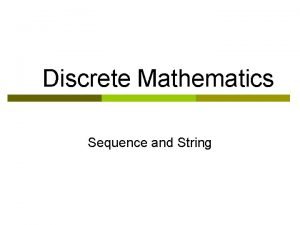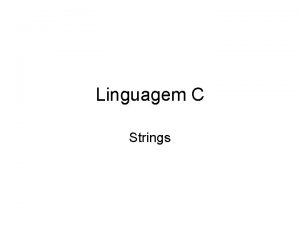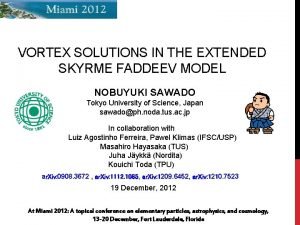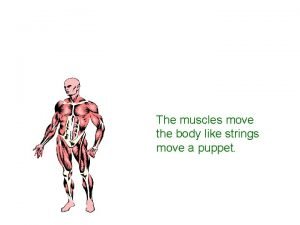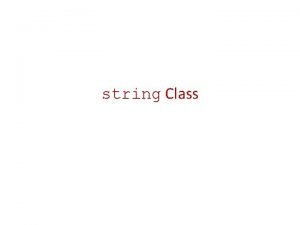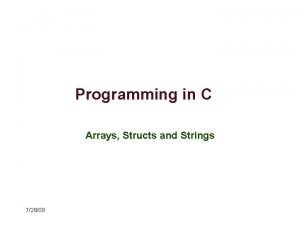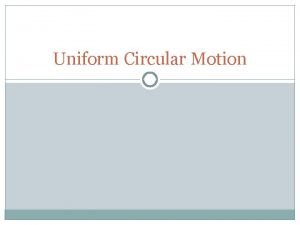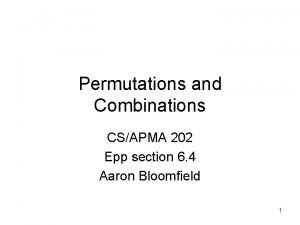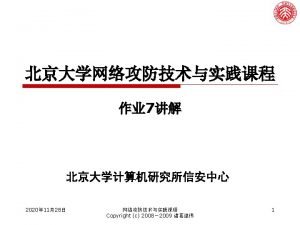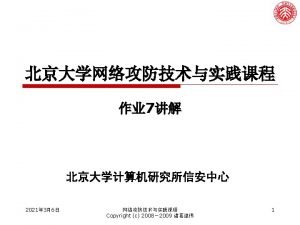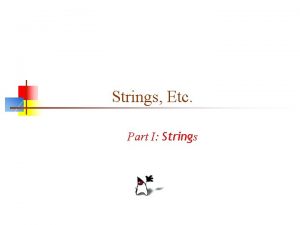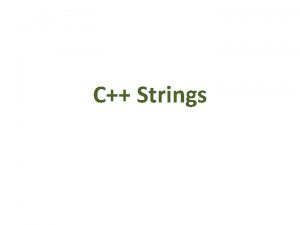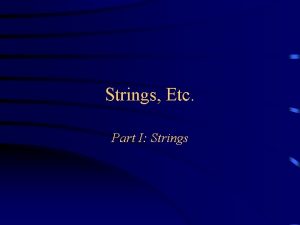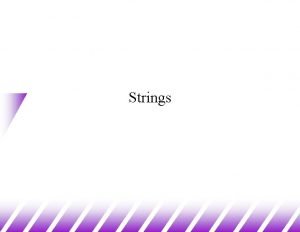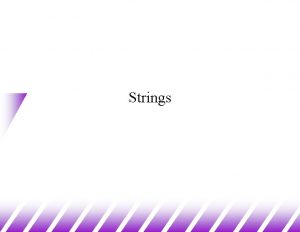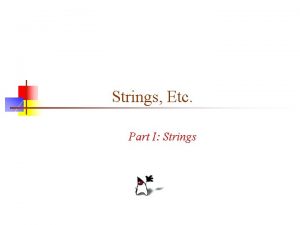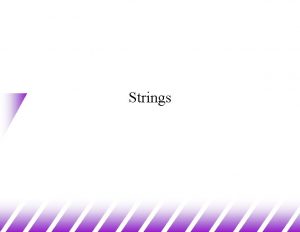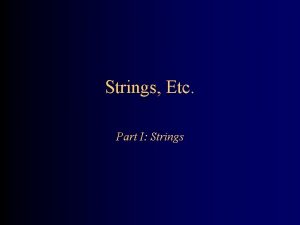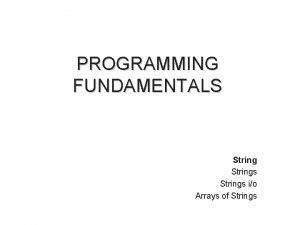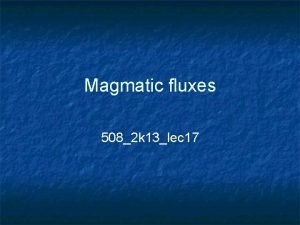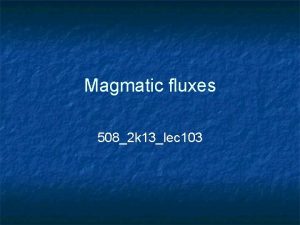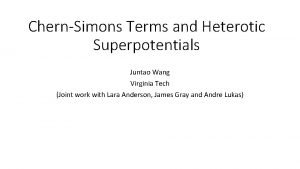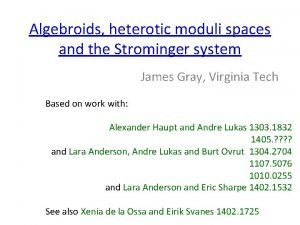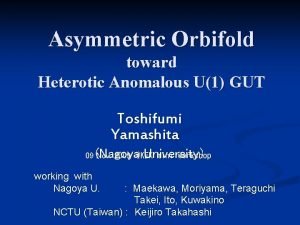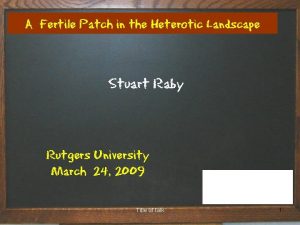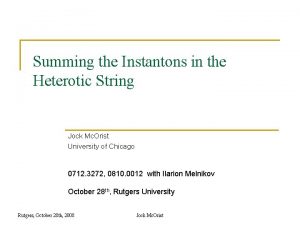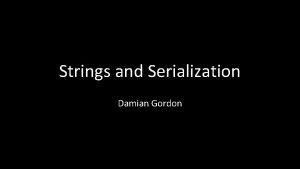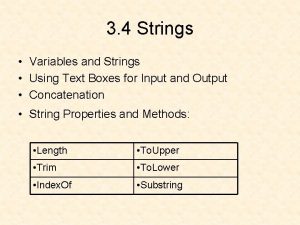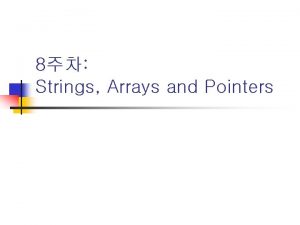Heterotic strings and fluxes status and prospects Katrin

































- Slides: 33

Heterotic strings and fluxes: status and prospects Katrin Becker ``New perspectives in string theory'' GGI, Florence, April 2009

Introduction and motivation Constructing of flux backgrounds for heterotic strings The background space is a torsional heterotic geometry. Why are these geometries important? 1) Generality 2) Phenomenology: moduli stabilization, warp factors, susy breaking, . . .

The heterotic string is a natural setting for building realistic models of particle phenomenology. The approach taken in the past is to specify a compact Kaehler six-dimensional space together with a holomorphic gauge field. For appropriate choices of gauge bundle it has been possible to generate space time GUT gauge groups like E 6, SO(10) and SU(5). Candelas, Horowitz, Strominger, Witten, '85 Braun, He, Ovrut, Pantev, 0501070 Bouchard, Donagi, 0512149 It is natural to expect that many of the interesting physics and consequences for string phenomenology which arise from type II fluxes (and their F-theory cousins) will also be found in generic heterotic compactifications and that moduli can also be stabilized for heterotic strings.

3) World-sheet description: flux backgrounds for heterotic strings are more likely to admit a world-sheet description as opposed to the type II or F-theory counterparts. Type II string theory or F-theory: Fluxes stabilize moduli but most of the time the size is not determined and remains a tunable parameter. This is very useful since we can take the large volume limit describe the background in a supergravity approximation. However, these are RR backgrounds and its not known how to quantize them. Moreover, the string coupling is typically O(1). It is unlikely that a perturbative expansion exists.

Heterotic strings: the string coupling constant is a tunable parameter which can be chosen to be small. There is a much better chance of being able to find a 2 d world-sheet description in terms of a CFT, to control quantum corrections. Based on: K. Becker, S. Sethi, Torsional heterotic geometries, 0903. 3769. K. Becker, C. Bertinato, Y-C. Chung, G. Guo, Supersymmetry breaking, heterotic strings and fluxes, to appear.

Overview: 1) Motivation and introduction. 2) Heterotic low-energy effective action in 10 d. 3) Method of construction. 4) Torsional type I background. 5) The Bianchi identity. 6) K 3 base. 7) Conclusion.

Heterotic low energy effective action in 10 d

The curvature is defined using the connection H includes a correction to Bergshoeff, de Roo, NPB 328 (1989) 439

We will solve:

1) If H=0 the solutions are CY 3 or K 3 x. T 2 2) If H does not vanish the spaces are complex but no longer Kaehler. There is still a globally defined two-form J but it is not closed. The deviation from `Kaehlerity' is measured by the flux There are no algebraic geometry methods available to describe spaces with non-vanishing H. So we need a new way to describe the background geometry. Our approach will be to describe them explicitly with a metric.

Method of construction

M-theory Kaehler form of CY 4 In the presence of flux the space-time metric is no longer a direct product warp factor coordinates of the CY 4

The CY 4 is elliptically fibred so that we can lift the 3 d M-theory background to 4 d. . . The G 4 flux lifts to together with gauge bundles on 7 -branes. Susy requires

The orientifold locus At the orientifold locus the background is type IIB on B 6 with constant coupling. . To describe B 6 start with an elliptic CY 3 Symmetry base coordinates

The metric for an elliptic CY space In the semi-flat approximation: Away from the singular fibers there is a U(1)x. U(1) isometry. . .

Flux In type II theories the fluxes are. . . . and should be invariant under Since the NS-NS and R-R 3 -forms are odd under

Type IIB background 3 -form flux 5 -form flux

Torsional type I background

In order to construct the type I solution we have to perform two T-dualitites in the fiber directions. To apply the dualitites rigorously we will assume that up to jumps by SL(2, Z), the complex structure parameter of of the elliptic fiber of the CY 3 can be chosen to be constant. With other words we assume that the CY 3 itself has a non-singular orientifold locus. In this case the base of the elliptic fibration is either K 3 or one of the Hirzebruch surfaces Fn (n=0, 1, 2, 4). For these cases the duality can be done rigorously. But solutions also exists if the complex structure parameter is not constant. .

Type I background

Comments: 1) The spinor equations are solved after imposing appropriate conditions on the flux The SUSY conditions (spinor equations) are a repackaging of the spinor conditions in type IIB. 2) The spinor equations are solved if and the base is not K 3 or one of the Hirzebruch surfaces. 3) The scalar function is not determined by susy. It is the Bianchi identity which gives rise to a differential equation for

The Bianchi identity

The Bianchi identity in SUGRA In type II SUGRA After two T-dualities in the fiber directions the NS-NS field vanishes as expected from a type I background This is a differential equation for the scalar function which turns out to be the warp factor equation of type IIB which schematically takes the form

The Bianchi identity in a perturbative expansion One can always solve the Bianchi identity in a perturbative expansion in 1/L, where L is the parameter which is mirror to the size in type IIB. On the type I side it corresponds to a large base and small fiber. curvature 2 -form of the base

K 3 base

Torsional heterotic background with K 3 base The heterotic background is obtained from the type I background by S-duality The resulting metric is K 3

Topology change When the fiber is twisted the topology of the space changes. A caricature is a 3 -torus with NS-flux Using the same type of argument one can show that the twisting changes the betti numbers of the torsional space compared to the CY 3 we started with. Topology change is the `mirror' statement to moduli stabilization in type IIB. Some fields are lifted from the low-energy effective action once flux is included. .

The other fields are. . .

Next we want to solve. . . To leading order For solutions with N=2 susy in 4 d equations of motion

K 3

Conclusion We have seen how to construct torsional spaces given the data specifying an elliptic CY space. There are many more torsional spaces than CY's. Many properties which are generic for compactifications of heterotic strings on Kaehler spaces may get modified once generic backgrounds are considered.

The End

College Station, Texas June 28 -- July 2, 2010
 Heterotic string theory
Heterotic string theory Quantum computing progress and prospects
Quantum computing progress and prospects The remark of the greek epigrammatist
The remark of the greek epigrammatist Prospects of agriculture in bangladesh
Prospects of agriculture in bangladesh World population prospects
World population prospects Prospects preposition
Prospects preposition Elastic potential energy equation further maths
Elastic potential energy equation further maths Pointers and strings
Pointers and strings Sprint tokenizer
Sprint tokenizer Assembly array of strings
Assembly array of strings Import java.util.string
Import java.util.string Flexible pattern matching in strings
Flexible pattern matching in strings Rate of energy transfer by sinusoidal waves on strings
Rate of energy transfer by sinusoidal waves on strings Python compare strings
Python compare strings Double headed cylindrical drum of the maranao.
Double headed cylindrical drum of the maranao. Mason nagy
Mason nagy Rhyming strings
Rhyming strings A type of cipher that uses multiple alphabetic strings.
A type of cipher that uses multiple alphabetic strings. Stos assembly
Stos assembly Things not strings
Things not strings Three masses are connected by strings
Three masses are connected by strings Sequence in discrete mathematics
Sequence in discrete mathematics Upx unpacker
Upx unpacker Char na linguagem c
Char na linguagem c Vortex strings
Vortex strings Lflexion
Lflexion C string class
C string class What is string in programming
What is string in programming Jmp concatenate strings
Jmp concatenate strings Uniform circular motion lab answer key
Uniform circular motion lab answer key Ottawa suzuki strings
Ottawa suzuki strings How many bit strings of length 10 contain
How many bit strings of length 10 contain Ida pro strings
Ida pro strings Ida strings
Ida strings
